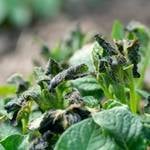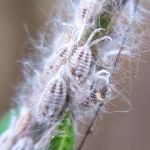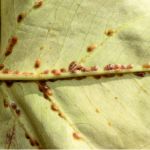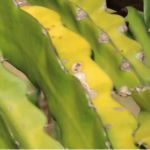
How to Grow Dragon Fruit Cuttings
Grow Guide #2854
Family: Cactaceae
Binomial name: Selenicereus sp.
Life Cycle: perennial
This 'How to Grow' guide details everything a home gardener needs to know to plant, grow and care for Dragon fruit (Selenicereus sp.).
When to Plant Dragon Fruit Cuttings
Dragon fruit is a perennial plant that grows year-round in most climates. Use the table below to identify the best time of year to plant dragon fruit cuttings in your climate.
| JAN | FEB | MAR | APR | MAY | JUN | JUL | AUG | SEP | OCT | NOV | DEC | |
|---|---|---|---|---|---|---|---|---|---|---|---|---|
| Cool | ||||||||||||
| Temperate | ||||||||||||
| Sub-Tropical | ||||||||||||
| Tropical | ||||||||||||
| Arid |
Preparation
Dragon fruit plants are best grown in full sun. Choose a location that will receive at least 6 hours of full sun each day.
Dragon fruit plants are perennial, meaning they live for several years. Choose a permanent position where plants can grow undisturbed by regular digging.
Dragon fruit is a tender plant that's sensitive to frost. In cold climates, grow dragon fruit plants in containers in a warm, sheltered position such as against a north-facing wall.
Some varieties of dragon fruit are self-fertile while others are self-sterile and require cross-pollination. If growing self-sterile varieties, plant two or more different varieties close together so they can pollinate each other. A common way to do this is to plant 3-4 different varieties around a single post or trellis.
Dragon fruit plants need a very well drained soil high in organic matter. Enrich soil with compost or well-rotted manure before planting. Prepare soil by weeding it thoroughy and digging it over to loosen it. Keep the area free of weeds until planting.
Dragon fruit plants can be grown in containers. If possible choose a variety that’s recommended for container growing. Use a good quality potting mix and make sure your container is large enough for mature plants; a minimum of 75 litres is recommended for dragon fruit. During the growing season, keep in mind that container grown plants may need additional fertiliser to encourage healthy growth.
How to Plant Dragon Fruit Cuttings
Dragon fruit cuttings are best started in a small pot and then transferred to their permanent position in a larger container or in the garden. Cuttings root well indoors or in a warm, shady position outdoors; they may suffer from sunburn if grown in full sun.
- Fill a 14-20cm diameter pot with good quality potting mix or mushroom compost.
- Plant the cutting 2-3cm deep.
- Important: the arrow marked on the cutting should be pointing to the sky.
- Support the cutting with a bamboo cane or thin stake so it sits upright.
- Tie the plant to the stake with grafting tape or soft plant tie.
- Water in well, then only water when the soil has dried out.
- Transplant cuttings once they have formed roots and developed new growth.
.png)
Harden off cuttings before transplanting them to avoid sunburn. Do not transplant cuttings until all danger of frost has passed.
How to Grow Dragon fruit
Dragon fruit plants are drought tolerant once established and grow best in soil that is dry and very well drained. Let the soil dry out between watering, and only water when the soil is dry about 10cm below the surface (test this by scratching away a little soil with your finger), even in summer. Water deeply in the early morning or late afternoon. Avoid watering the leaves of plants to avoid fungal diseases. Learn more about watering here.
If soil was well prepared no extra fertiliser should be necessary. In poor soil or to give your plants an extra boost, application of a balanced fertiliser or one formulated for fruit and vegetables can be beneficial:
- Apply slow release fertiliser at the recommended rate when transplanting or when seedlings are 5-10cm tall.
- Apply liquid fertiliser at the recommended rate and frequency while plants are fruiting or flowering.
Plants can also be fertilised with Epsom salts (magnesium sulphate) to encourage flowering and prevent leaves from yellowing. Once plants are established, the aerial roots can be fed with a foliar fertiliser every 2 weeks during the growing season.
Dragon fruit plants need a strong post or trellis to support plants as they climb. As plants grow they will branch and hang over the support. Mature plants are heavy, so take this into account when choosing a support structure. A post 15-20cm in diameter and 1.5-2m tall above ground with a sturdy frame at the top is recommended. Make sure you have the support in place when you transplant cuttings to avoid disturbing the plant's roots later. Alternatively, dragon fruit plants can be trained up and along a sturdy fence.
As plants grow, tie stems gently to the support using grafting tape or soft plant ties. Remove side shoots until plants reach the top of the support.
Plants can also be pruned to tidy them and control their size. Prune branches after they have fruited.
.jpg)
How to Harvest Dragon fruit
Dragon fruit should be ready to harvest in approximately 1-3 years.
Fruit is ready to harvest when the skin has coloured and the fruit has reached full size. When ripe, mature fruit will give a little when pressed and wiggle slightly on the branch when moved. Ripe fruit can be left on the plant for around 2 weeks before harvest if protected from birds, possums and other pests.
Note: The fruit of some yellow dragon fruit varieties are covered with spines. The spines can be removed be brushing fruit with a soft brush before harvesting.
Harvest fruit by twisting it from the plant or cutting it off with clean, sharp secateurs or a knife. Dragon fruit can be stored short term at room temperature or in the fridge. For longer term storage, flesh can be cut into cubes and frozen for use in smoothies and sorbet. Fruit is best eaten chilled.
Common Problems when Growing Dragon fruit
Like all plants, dragon fruit is susceptible to some pests, diseases and other problems. Below is a list of the most common problems gardeners encounter when growing dragon fruit plants:
 Frost damage can cause leaves to wilt and go black. Do not plant seedlings in the garden until all danger of frost has passed in spring, and harvest plants before winter. Prune all frost-damaged leaves to avoid them rotting on the plant.
Frost damage can cause leaves to wilt and go black. Do not plant seedlings in the garden until all danger of frost has passed in spring, and harvest plants before winter. Prune all frost-damaged leaves to avoid them rotting on the plant. Possums, birds and other animals can ruin a large percentage of your harvest overnight. Physically exclude pests by using netting or cages, or try spraying plants with a pungent homemade spray made from garlic, fish oil or mustard.
Possums, birds and other animals can ruin a large percentage of your harvest overnight. Physically exclude pests by using netting or cages, or try spraying plants with a pungent homemade spray made from garlic, fish oil or mustard. Rust (Puccinia sp.) is a fungal disease that causes brown to orange raised spots or patches to appear on foliage. Fungal spores are spread by wind or water to neighbouring plants, especially in temperatures of 10-20C and when humidity is high. To manage rust, space plants to avoid overcrowding, grow them in the recommended amount of light (eg full sun), do not over fertilise crops, remove dead plants and practice crop rotation. Read more about rust fungus here.
Rust (Puccinia sp.) is a fungal disease that causes brown to orange raised spots or patches to appear on foliage. Fungal spores are spread by wind or water to neighbouring plants, especially in temperatures of 10-20C and when humidity is high. To manage rust, space plants to avoid overcrowding, grow them in the recommended amount of light (eg full sun), do not over fertilise crops, remove dead plants and practice crop rotation. Read more about rust fungus here. Mealybugs (Pseudococcidae sp.) are small (3-6mm long) sap-sucking insects with white, pink or gray bodies covered in a mealy coating that looks like cotton wool. They can cause leaves to wilt and also excrete honeydew which can attract ants and other insect pests. To manage mealybugs, remove them by wiping leaves, apply a soap or alcohol spray, or encourage predatory insects to your garden. Read more about mealybugs here.
Mealybugs (Pseudococcidae sp.) are small (3-6mm long) sap-sucking insects with white, pink or gray bodies covered in a mealy coating that looks like cotton wool. They can cause leaves to wilt and also excrete honeydew which can attract ants and other insect pests. To manage mealybugs, remove them by wiping leaves, apply a soap or alcohol spray, or encourage predatory insects to your garden. Read more about mealybugs here. Queensland Fruit Fly (Bactrocera tryoni) that lays its eggs in fruit, causing it to rot from the inside. Fruit will fall prematurely and larvae can be seen if affected fruit is cut open. Practice good garden hygiene by disposing of fallen fruit, protect fruit with insect exclusion netting and install traps to monitor fruit fly populations. Read more about Queensland fruit fly here.
Queensland Fruit Fly (Bactrocera tryoni) that lays its eggs in fruit, causing it to rot from the inside. Fruit will fall prematurely and larvae can be seen if affected fruit is cut open. Practice good garden hygiene by disposing of fallen fruit, protect fruit with insect exclusion netting and install traps to monitor fruit fly populations. Read more about Queensland fruit fly here. Root rot is a disease caused by soil-borne fungi found in wet soil. Plants may be slow to establish, have yellowing or wilted foliage and have soft, brown tissue around the base of the stem and roots. Root rot is often fatal; remove and dispose of affected plants. Reducing soil moisture, adding organic matter to the soil and making sure mulch doesn't touch the stems of plants may help avoid root rot.
Root rot is a disease caused by soil-borne fungi found in wet soil. Plants may be slow to establish, have yellowing or wilted foliage and have soft, brown tissue around the base of the stem and roots. Root rot is often fatal; remove and dispose of affected plants. Reducing soil moisture, adding organic matter to the soil and making sure mulch doesn't touch the stems of plants may help avoid root rot. Scale are a diverse group of sap-sucking insects that congregate on the new shoots or the undersides of leaves. They may be hard or soft bodied and brown, orange, grey or white. Scale can damage leaves and also excrete honeydew which can attract ants and other insect pests. To manage scale, brush or hose them off leaves, apply a soap spray, or prune off heavily infested leaves and shoots. Read more about scale here.
Scale are a diverse group of sap-sucking insects that congregate on the new shoots or the undersides of leaves. They may be hard or soft bodied and brown, orange, grey or white. Scale can damage leaves and also excrete honeydew which can attract ants and other insect pests. To manage scale, brush or hose them off leaves, apply a soap spray, or prune off heavily infested leaves and shoots. Read more about scale here. Sunburn creates white or yellow patches on leaves and branches; they may be hardened, scabbed or peeling. The damage creates a wound that makes plants susceptible to rotting and other diseases. Harden off seedlings and cuttings before placing them in a position in full sun. Cover plants with a light fabric on very hot days to protect them from sunburn.
Sunburn creates white or yellow patches on leaves and branches; they may be hardened, scabbed or peeling. The damage creates a wound that makes plants susceptible to rotting and other diseases. Harden off seedlings and cuttings before placing them in a position in full sun. Cover plants with a light fabric on very hot days to protect them from sunburn.


.png)






